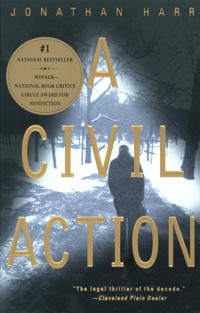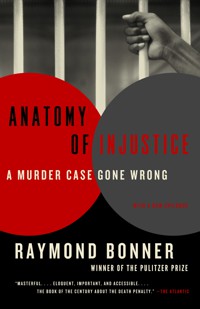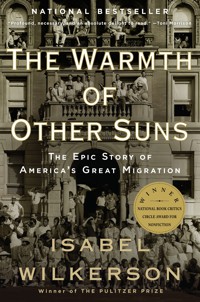Seven True Stories That Read Like Thrillers
These immersive works of journalism follow ordinary Americans facing long odds.

People love underdogs. Researchers have time and again observed that the public, and perhaps especially the American public, is drawn to stories in which an average person, through some combination of luck and gumption, trounces a far more formidable opponent in a lopsided conflict. One of the most plausible explanations for this appeal is that underdog narratives stir our deep-seated desire for a just world, one where virtuous people actually get what they deserve. Personally, as a writer, I’m attracted to these accounts because they tend to be full of what William Faulkner once called “the old verities and truths of the heart” that stories need to succeed—that is, “love and honor and pity and pride and compassion and sacrifice.”
My new book, Valley So Low, is something of an underdog story: It follows a small-time Knoxville lawyer who takes on the powerful Tennessee Valley Authority after a disaster at one of its coal-fired power stations sickens hundreds of blue-collar workers. Over the five years I spent working on it, I looked for inspiration in nonfiction books that took a similar shape. The ones that most resonated were immersive, carefully created works of journalism that followed ordinary Americans facing long odds—in the courts of law, in the workplace, or in their own neighborhoods. The authors of these books in many cases spent years collecting details to bring their characters to life on the page to a degree typically reserved for fiction. These seven standouts are each about everyday people pushing back against wildly difficult, often unfair circumstances. And, even though the protagonists don’t always win or come out ahead, exactly, they at least endure, which is often its own sort of victory.

A Civil Action, by Jonathan Harr
Most nonfiction books, even immortal ones, like Robert Caro’s The Power Broker, rely heavily on scenes that the writer has reconstructed through reporting and research; that is, the writer typically didn’t witness the events described firsthand. A Civil Action—about a lawsuit against two giant corporations, Beatrice Foods and W. R. Grace, over water pollution in Woburn, Massachusetts, in the 1980s—is remarkable in that Harr seems to have been present for nearly every meeting, every hearing, and every round of drinks after each brutal day in court. Harr’s main character, Jan Schlichtmann, is an idealistic attorney representing eight families sickened with leukemia by chemicals that the two companies allegedly dumped into a river near their homes, poisoning their drinking water. Thanks to Harr’s efforts—he worked on the book for eight years, and often slept on Schlichtmann’s fold-out couch while reporting—A Civil Action illuminates, in cinematic detail, why regular citizens struggle to win toxic-exposure suits against corporate polluters: Even if the plaintiffs have compelling facts and a dedicated attorney, like Schlichtmann, the polluters almost always have more money, and money will buy you time. And when your clients are sick and dying, Schlichtmann learns, time is a powerful enemy.
[Read: Why the EPA backed down]
“The Escape of Mrs. Jeffries,” by Janet Flanner
Sometimes an obstacle blocking your path feels like a mountain, and other times the obstacle is, in fact, a mountain. Such was the case for Ellen Jeffries, a middle-aged American expat who was trapped in wartime Paris with no easy way to return to the States after her adopted country fell to Adolf Hitler. Fearing internment, she hatches an audacious plan: flee south through France, cross over the Pyrenees on foot to Spain, then finally catch a flight back stateside. Flanner, who was The New Yorker’s Paris correspondent for almost 50 years, thrillingly recounts Jeffries’s efforts to evade the Nazis on her trek to freedom, which include a harrowing nighttime river crossing before a mountain ascent to the relative safety of Spain. In relaying Jeffries’s story, Flanner pioneered a form of nonfiction writing that her New Yorker colleague John Hersey would later mimic to fame-making effect in his horrific 1946 story “Hiroshima,” wherein nearly all traces of the author’s reporting have been excised, leaving only a novelistic rendering of events. But Flanner, the world should know, did it first, in 1943. A stand-alone audiobook version of Jeffries’s story came out last year; you can also read it in Janet Flanner’s World or in The New Yorker Book of War Pieces.

Anatomy of Injustice, by Raymond Bonner
Every wrongful-conviction story is tragic and pitiful, but the ordeal of Edward Lee Elmore is especially so, as Bonner’s tightly written account of his case makes clear. The book opens with the 1982 murder of a well-off elderly white woman, Dorothy Edwards, in Greenwood, South Carolina—a murder for which Elmore, an intellectually disabled Black handyman, is swiftly convicted and sentenced to death. But the story really gains momentum when a defense attorney named Diana Holt, whom Bonner profiled for The Atlantic in 2012, becomes convinced of Elmore’s innocence and decides to fight to win him a new trial. Holt has grit: She’s a former runaway who, in her youth, survived all manner of hellish abuse. Still, she struggles to overcome the fact that once a person is convicted in a court of law, not even exonerating new evidence guarantees that they’ll get off death row, never mind get another shot at justice. Elmore, through no shortage of legal miracles, eventually sees the outside of a jail cell, but it’s a victory tainted by the irrevocable wrongs done to him, which is why Bonner dares not call his release justice.
[Read: Why are innocents still being executed?]

Almighty, by Dan Zak
One night in July 2012, an 82-year-old nun named Megan Rice and two companions break into the Y-12 National Security Complex in Oak Ridge, Tennessee. This, as it turns out, proves to be pretty easy, even though the place is nicknamed “the Fort Knox of Uranium.” But exposing the ease of infiltrating Y-12, where the government produces and stores atomic-bomb fuel, is Rice’s main objective. She’s a member of the anti-nuclear group Plowshares, and in this dynamic, accessible book, Zak, a reporter for The Washington Post, unspools how Rice and other activists seek to end nuclear-arms proliferation through “actions” intended to scare the wits out of policy makers and the public by revealing the poor security at nuclear-weapons sites. Maybe then, the activists reason, nations will agree to decommission their warheads before they fall into dangerous hands. Toward the end, Zak shifts his focus to the lawmakers and military leaders who ultimately decide our nuclear-arms policies. In doing so, he details how emerging threats have reinforced Washington’s view that the best way to avoid the next major-power war is through stockpiling more warheads—and observes that the disarmament crowd’s desire for a nuclear-free world likely won’t be realized in our lifetimes, if ever, unless that dynamic changes.
Power to Hurt, by Darcy O’Brien
O’Brien, the son of Hollywood actors, had a knack for turning lurid crimes of the sort you might find on Dateline or 20/20 into something akin to art, and Power to Hurt is his crowning achievement. Published in 1996, the book follows Vivian Forsythe, a divorced young mother from Dyersburg, Tennessee, who, in a stroke of unimaginably awful luck, applies to work for local judge David Lanier. Lanier rapes Forsythe during a job interview, which O’Brien recounts in upsetting, unwavering detail. Afterward, Forsythe tells no one about the attack, because Lanier and his brother, the local district attorney, effectively control the county. But eventually Forsythe and Lanier’s other victims—and there are many, she discovers—meet an FBI agent and work together to bring down the old judge, a campaign that takes the better part of a decade and comes to involve the U.S. Supreme Court. Power to Hurt is ultimately less a true-crime book than a post-crime book in which victims summon radical courage to confront a monster.
[Read: ‘Nobody is going to believe you’: Bryan Singer’s accusers speak out]
The Last Cowboy, by Jane Kramer
Henry Blanton wants to be a cowboy—a real cowboy. Never mind that he already runs a ranch, and the job is not all that great: He’s an unhappily married foreman of a 90,000-acre tract in the Texas Panhandle. But, at age 40, he still dreams of becoming an old-time gunslinger who roams the open plain, like the heroes of the Western movies he watches compulsively. The problem, as Kramer captures in this sharp 1977 book, is that modernity has made the free-ranging life of Blanton’s dreams almost impossible: Barbed wire constrains the cattle; Eastern conglomerates control many of the ranches; and paychecks are piddly for hired hands like Blanton, whose struggles to get by eventually drive him to a breaking point. Kramer, who’s in her 80s now and seldom publishes new work, has become a name that only serious magazine lovers would recognize, even though she spent decades covering Europe for The New Yorker. That is a shame, because her journalism at its best, as it is in this book, is as textured and compelling as that of her better-known contemporaries, and she masterfully captures life at the edges of America.

The Warmth of Other Suns, by Isabel Wilkerson
Wilkerson’s masterpiece begins roughly in the middle of the oppressive Jim Crow regime in the South, in the years leading up to and immediately following the Second World War, as three young Black people—a doctor, a sharecropper’s wife, and a fruit picker—flee the region for better jobs and possibly friendlier neighbors in the North or West. Her three characters stand in for the approximately 6 million other Black Americans who made similar journeys as part of the mass exodus that would become known as the Great Migration. Wilkerson spent 15 years writing and reporting her book on the subject, and the effort paid off: The New York Times recently ranked it as the second-best book of the 21st century. What makes the book remarkable is less Wilkerson’s sweeping history of the southern exodus (though she handles this deftly) than her granular reporting on her central characters, who each face unexpected hardships in their adopted new homes. The result is a tale about a too-frequently ignored chapter of American history that continues to shape our country’s present.










